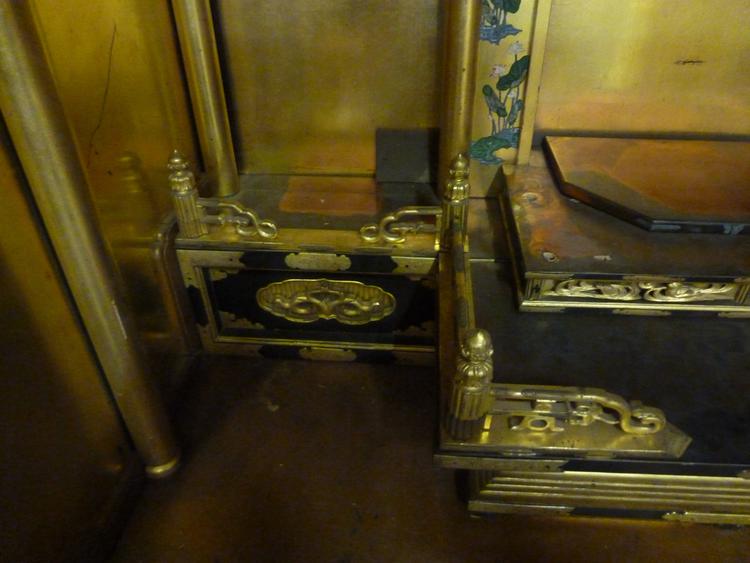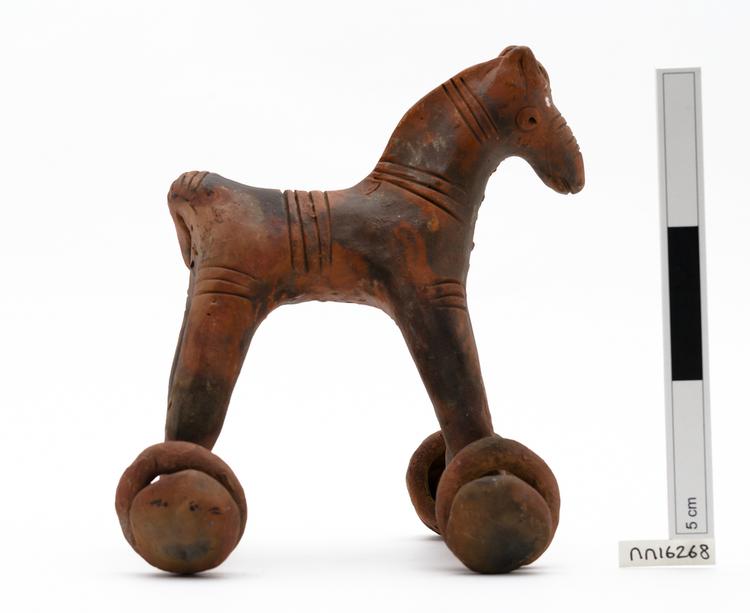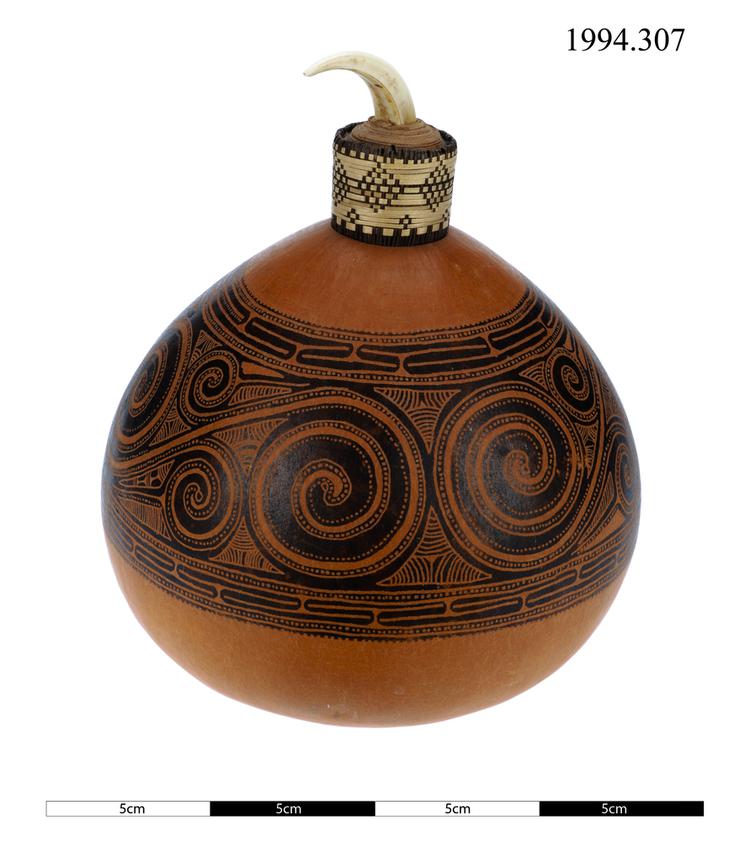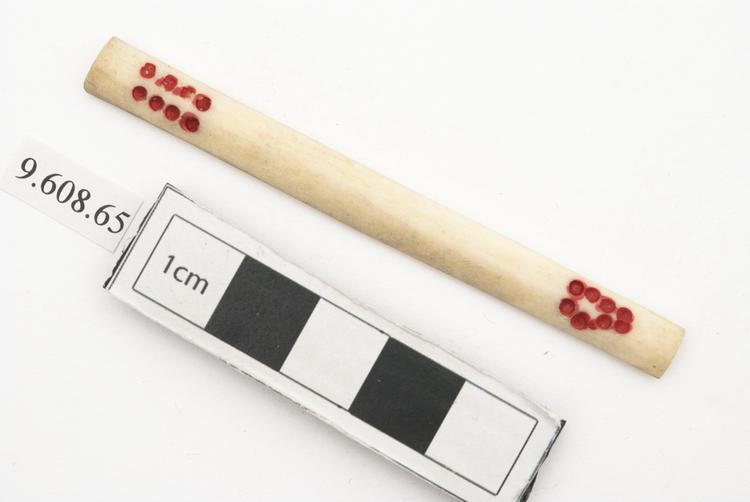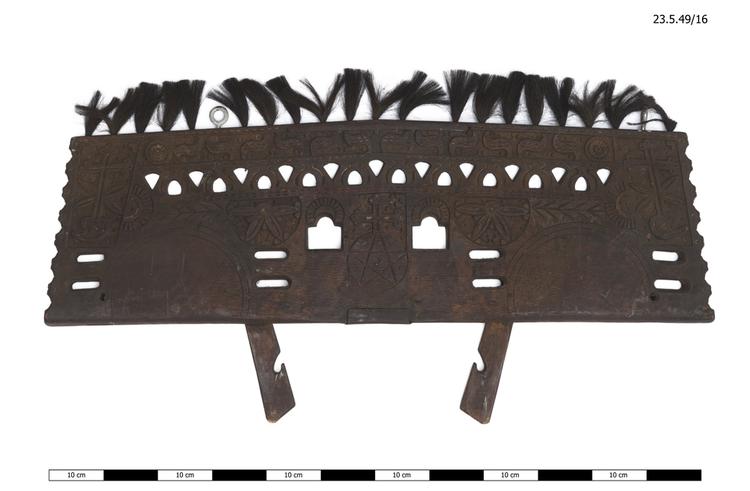
Wooden ox yoke, jugo de tábua, carved in animal and other designs and painted in red, yellow and other colours. The top is decorated with tufts of hair. H (overall 2’ 1 “). L 3’ 11”. Thickness 3½”.
The yoke's image that you sent me (which we, in Portugal, call "Jugo" or "Canga" - especifically "Jugo de tábua", which means board-like Jugo) refers to a specific one, which is very common in the NorthWest of Portugal, especially in the area of Oporto (Porto). These kind of yokes were very common from the mid XIX century on. The farmers that owned one of these were, perhaps, a bit wealthier than the poorer day labourers. They probably owned their piece of land and the yoke became a "mirror" of the farm. Going to the markets, cities (like Porto), to processions, to Sunday mass, etc, was the right occasion to attach the oxen together with such yokes which, sometimes, even had the name of the owner carved. The one you showed me would be attached both to the oxen's horns and their necks, using leather belts and/or wooden collars. This would make it easier for them to pull the weight. The founders of the museum wrote a book about this topic, of which I leave you the reference: Oliveira, Ernesto Veiga de; Pereira, Benjamim; Galhano, Fernando - "Sistemas de Atrelagem dos bois em Portugal". Lisboa: Instituto de Alta Cultura, 1973. Pedro Augusto Museu Nacional de Etnologia Lisboa



